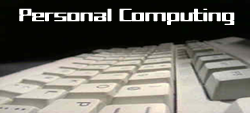 By Reid Goldsborough
By Reid Goldsborough
One of the most used, and most overlooked, pieces of digital hardware is the keyboard. Full-size physical keyboards are what most distinguish laptop and desktop PCs from their smaller cousins, tablets and smartphones.
Until voice recognition becomes several orders of magnitude better than it currently is, keyboards will remain the quickest, most productive way to input data into a computing device.
There are many ways you’re probably not using your keyboard as productively as you could. Keeping your hands on the keyboard lets you do things faster than lifting one to push your mouse, swipe your touchpad, or press your touchscreen. There are other interesting things about the keyboard you peck away at every day that you probably don’t know.
Microsoft co-founder Bill Gates made headlines in the tech media recently by talking about the keyboard’s Ctrl-Alt-Del keyboard function.
This keyboard combination is largely redundant today with Windows PCs.
With it you can lock your computer, change your password, switch to a different user, start the Task Manager, or log off, tasks you can initiate quicker otherwise.
In the past Ctrl-Alt-Del was how you rebooted a locked-up PC. In an interview at Harvard University, Gates complained that in the days when Windows’ predecessor, DOS, was being developed, IBM keyboard designers wouldn’t grant his request to include a single key or button to perform this function.
Windows keyboards today have other keys and keyboard combinations that you’re probably not using fully.
The Windows key, which is imprinted with a four-paned window, is one of the most useful. Pressing it displays the Start menu or Start screen.
Pressing it in combination with other keys does other things. Some apply to all recent versions of Windows, others to specific versions.
Windows-D takes you to the desktop, while pressing it again takes you back where you were. Windows-Down Arrow minimizes the current window and Windows-Up Arrow maximizes it in Windows 7 and later. Windows-+ opens the Magnifier and Windows-Esc closes it in Windows 7 and later.
Windows-F initiates Windows Search, while Windows-S initiates the Search charm in Windows 8.1.
You’re probably using other keyboard combinations that have been around since before Windows. The most useful include Ctrl-S for saving your current document, Ctrl-C for copying the highlighting data, Ctrl-V for pasting the copied data, Ctrl-Z for undo, and F1 for Help.
Other useful, frequently used keyboard combinations include Alt-Tab to switch among open programs, Alt-F6 to switch among open documents in the same program, Alt-F4 to quit the current program, Tab to move quickly to the next dialog box or Web link, and Alt-letter to move to the underlined letter in a dialog box.
PrtSc, short for Print Screen, is an interesting key. In DOS pressing it would print the text on your screen. In Windows pressing PrtSc captures the current screen and places it in the clipboard, where you can then paste it into a specific program. Alt-PrtSc captures only the active window. In Windows 8 and 8.1, Windows-PrtSc saves the current screen under the Screenshots subfolder in your My Pictures folder.
A little known trick is to press Shift-Alt-PrtSc. That also has nothing to do with printing the screen, but what it does is turn on the screen’s high-contrast mode or turn it off if it’s on. Instead of dark text against a bright white background, you’ll see light text against a black background. That means less light shining into your eyes and less eyestrain.
SysRq, for System Request, typically shares the same key as PrtSc. This has no standard use today and is there only as a holdover from mainframe computer keyboards made in the 1970s. The Pause/Break key also typically has no standard function today and goes back even further, to 19th century telegraphs. In Windows pressing Windows-Pause/Break brings up System properties, with information about your computer.
You can create your own keyboard shortcut in Windows as well as in many individual programs. As a quick way of starting a program, right-click on its Windows Desktop icon, click Properties, click Shortcut, click in the box after Shortcut key, and press Ctrl-Alt-first letter of program.
From then on pressing Ctrl-Alt-first letter of program will start the program.
Microsoft has a page on keyboard shortcuts at
support.microsoft.com/kb/126449 and for Windows 8.1 at windows.microsoft.com/en-US/windows-8/keyboard-shortcuts. For Mac users, Apple has a page at support.apple.com/kb/HT1343.
If you’re a keyboard shortcut geek, you’ll benefit from a third-party macro program such as the free AutoHotkey (www.autohotkey.com). Among its tools is the ability to expand abbreviations as you type them.
♦

